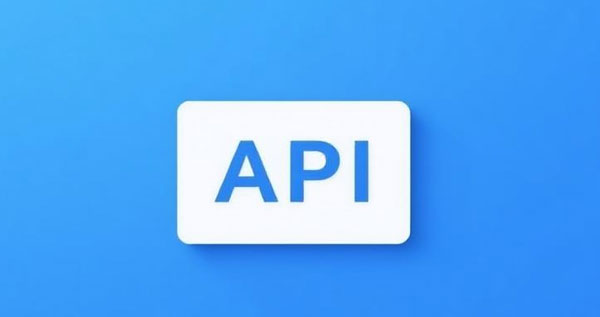Practical Guide to Data Productization: Building Your Investment Strategy API
In previous installments of this series, we explored the construction of a modern data system for investment research, covering topics from data collection, factor modeling, sentiment integration, to building a strategy engine. In this article, we take a significant step toward productizing the investment research system—transforming our strategy capabilities into a fully functional and accessible Strategy API Service, paving the way for automation, modularization, and service-oriented investment research tools.
1. Why Productize Strategies into APIs?
As investment research logic grows increasingly complex, internal strategy models are no longer simple scripts. Productizing them into APIs provides several key benefits:
Cross-system and cross-language accessibility: APIs enable use across front-end applications, quant modeling systems, or client-side tools.
Unified access control and interface governance: Strategically secure and manage access to key assets.
Integration with job scheduling systems: Automate strategy updates at specific times (e.g., 9:30 AM daily).
Team collaboration and logic reuse: Allow strategy logic to be shared and reused by analysts, PMs, and client teams.
Version control and monitoring: Track changes, compare versions, and ensure robust performance under evolving conditions.
Essentially, turning strategies into APIs empowers your organization with Strategy-as-a-Service, enabling structured, scalable decision-making.
2. Core Components of a Strategy API
A production-ready strategy API service typically consists of the following key modules:
Module | Description |
|---|---|
API Layer | Exposes an HTTP/RESTful service to handle external requests |
Core Strategy Logic | Handles scoring, stock screening, signal generation, and calculations |
Data Integration | Interfaces with Luckdata API, databases, or cache layers |
Scheduler System | Supports automatic execution (e.g., daily updates, batch jobs) |
Security & Logging | Authentication, rate limiting, access control, logging, and auditing |
This modular design allows for clear separation of concerns, scalability, and seamless integration with business tools.
3. Building a Simple Strategy API
Let’s take a "Sentiment + Financial Factor" strategy and wrap it into a Flask-based API.
API Endpoint Design:
GET /api/strategy/score?symbols=AAPL,TSLA,NVDA
Example Response:
[{"symbol": "AAPL", "score": 0.87, "signal": "BUY"},
{"symbol": "TSLA", "score": 0.63, "signal": "HOLD"},
{"symbol": "NVDA", "score": 0.21, "signal": "SELL"}
]
Sample Code:
from flask import Flask, request, jsonifyfrom strategy_engine import get_scores
app = Flask(__name__)
@app.route('/api/strategy/score')
def score_endpoint():
symbols = request.args.get('symbols', '').split(',')
results = get_scores(symbols)
return jsonify(results)
This API can easily be consumed by internal dashboards, mobile apps, or client platforms.
4. Modularizing Strategy Logic
The strategy logic should be modular, reusable, and testable:
def get_scores(symbols):valuation = fetch_valuation_data(symbols)
sentiment = fetch_sentiment_data(symbols)
scores = []
for symbol in symbols:
score = (
0.4 * standardize(valuation[symbol]) +
0.6 * standardize(sentiment[symbol])
)
signal = 'BUY' if score > 0.7 else 'HOLD' if score > 0.4 else 'SELL'
scores.append({"symbol": symbol, "score": round(score, 2), "signal": signal})
return scores
Data can be fetched directly via Luckdata APIs, which offer rich and structured data access:
def fetch_valuation_data(symbols):# Calls APIs like stock/v4/get-statistics
...
def fetch_sentiment_data(symbols):
# Uses news/v2/get-details, insights, etc.
...
Separating data logic from strategy logic ensures maintainability and clarity.
5. Scheduling and Automation
Use job schedulers like APScheduler to automate daily strategy updates:
from apscheduler.schedulers.background import BackgroundSchedulerdef scheduled_task():
symbols = get_watchlist_symbols()
results = get_scores(symbols)
save_to_db('daily_signals', results)
scheduler = BackgroundScheduler()
scheduler.add_job(scheduled_task, 'cron', hour=9, minute=35)
scheduler.start()
Alternatively, integrate with platforms like Airflow or Superset to create a full analytical pipeline.
6. Best Practices for Strategy API Productization
To make your strategy API scalable, maintainable, and user-friendly, consider the following enhancements:
Support multiple strategy types: Use parameters like
strategy=low_pe_sentimentto call different strategies.Parameterize inputs: Include time ranges, backtesting windows, filters, etc.
Version management: Allow multiple logic versions to coexist, supporting A/B testing and rollback.
Role-based access control: Use tokens or internal auth systems to manage user privileges.
Monitoring and alerts: Automatically detect errors, empty results, or unusual scores and trigger alerts.
Logging and auditing: Track API usage, request logs, and access histories for transparency.
These practices will future-proof your API and facilitate seamless collaboration and growth.
7. How Luckdata Accelerates Strategy API Development
Luckdata is more than a data source—it’s a strategy API enabler, offering significant advantages in the following areas:
Scenario | Luckdata’s Role |
|---|---|
Data Abstraction | Unified API interface, easy data access across markets |
Query Efficiency | Structured fields reduce the need for redundant data cleaning |
Strategy Backtesting | Built-in support for performance review and signal visualization |
Visual Output | Seamless integration with web pages, Feishu bots, mini-programs |
API Productization | Rapidly build internal or client-facing strategy services |
Luckdata acts as a solid foundation layer for rapidly building and iterating on your investment strategy products.
8. Vision: Building Your Strategy Ecosystem
Once your strategy API becomes a core organizational capability, you can expand it into a full-scale ecosystem:
Internal “Investment Toolbox”: Unified access to multi-strategy, multi-dimensional scoring models.
External Intelligent Assistants: Deliver personalized recommendations and strategy-driven insights to clients.
BI Integration: Auto-refresh dashboards and visualizations in Superset or Metabase.
Semi-Automated Trading: Connect to broker APIs for signal-to-order execution systems.
Strategy Platformization: Commercialize APIs by offering access via internal app stores or external subscriptions.
This sets the stage for greater efficiency, higher scalability, and smarter investment decisions across your organization.
Conclusion
Productizing strategies is not the end—it’s the beginning of transforming strategy logic into scalable, reusable, and intelligent services. By turning your scoring, filtering, and signal generation models into standardized APIs, you unlock:
Modular Maintenance
Rapid Strategy Reuse
Shared Data Services
Accelerated Decision-Making
With the support of the Luckdata platform, all of this becomes not only possible but efficient, controlled, and continuously evolvable.
Now is the time to build your own strategy ecosystem.
Articles related to APIs :
Multi-Factor Integration and Strategy Engine: Building a Data-Driven Investment Decision System
Building an Emotion Signal System: From Market News and Comments to Smart Sentiment Scoring
Quantitative Trading Strategy Development and Backtesting Based on Yahu API
Decoding Deep Stock Insights: Build Your Stock Analysis Radar with the Yahu API
Financial Forums Aren’t Just Noise: Using the Yahu API to Decode Market Sentiment




